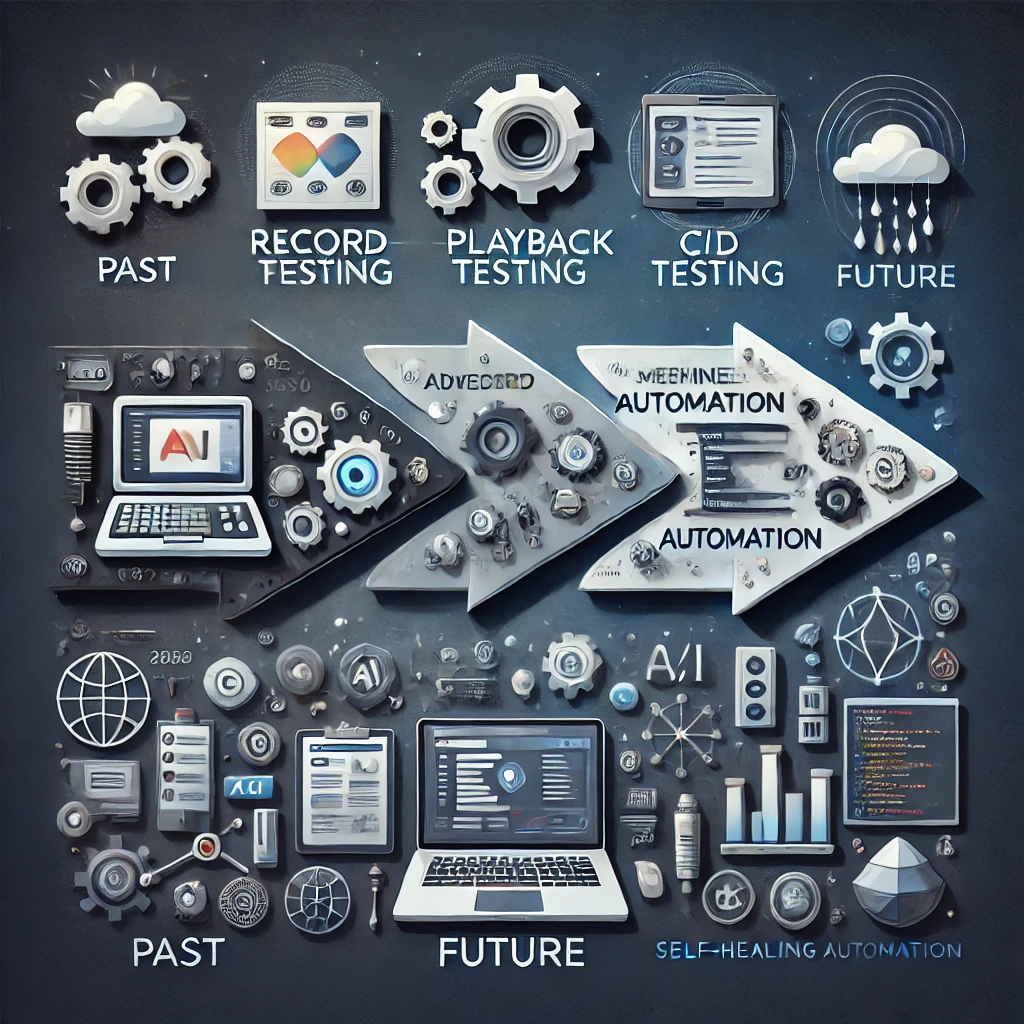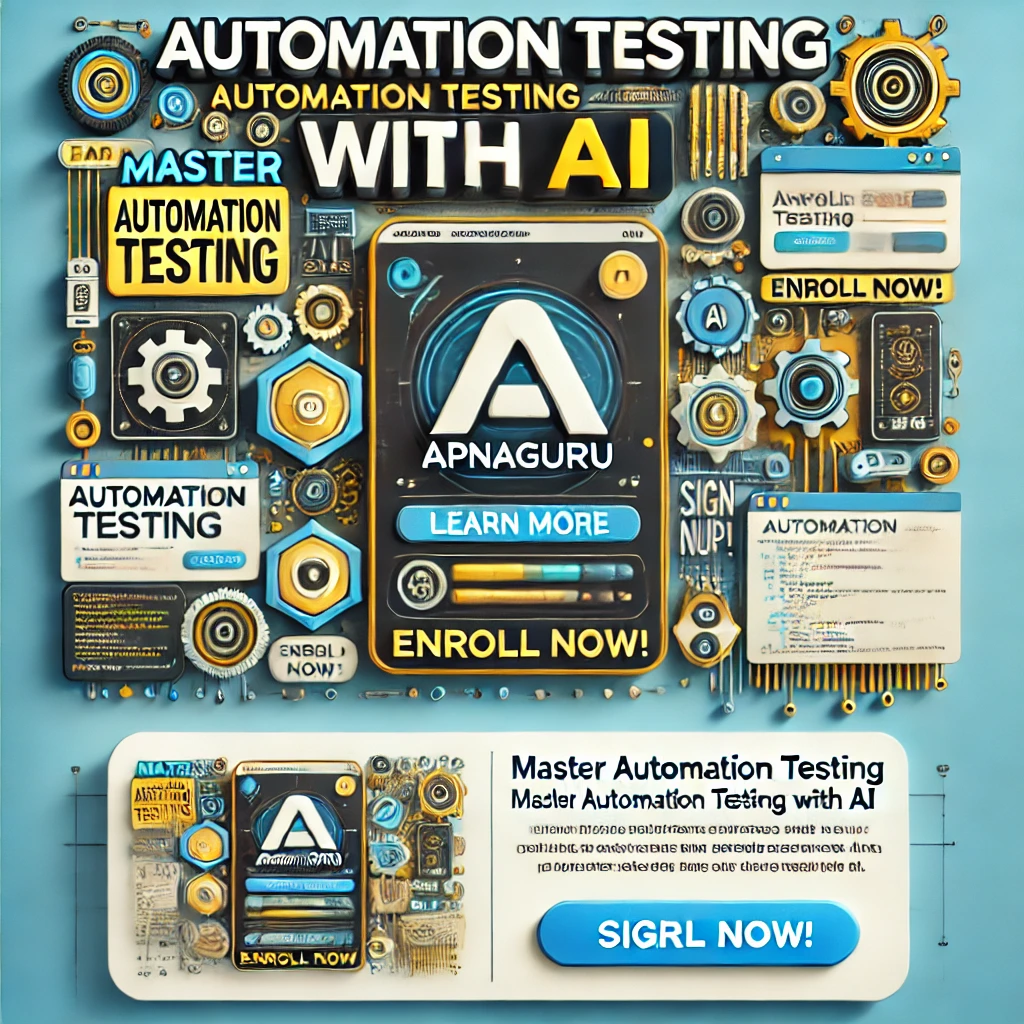The Evolution of Automation Testing: A Journey Through Past, Present, and Future
The Evolution of Automation Testing: Past, Present, and Future
In the rapidly advancing world of software development, automation testing has become a critical process, ensuring that software releases are efficient, reliable, and scalable. This article will take a journey through the history of automation testing, examining its origins, where it stands today, and what lies ahead. We’ll also discuss its advantages, common applications, and provide insights into a top-rated Automation Testing Course with AI by ApnaGuru to help you get started in this exciting field.

The Past of Automation Testing
Automation testing began as a solution to address the limitations of manual testing, which was time-consuming, costly, and error-prone. Early automation tools focused on basic functionality, offering record-playback features that allowed testers to capture user actions and replay them for verification. These tools, while groundbreaking, were limited by high costs, inflexibility, and frequent breakdowns when software underwent changes. Early on, the technology was primarily used by large enterprises with extensive resources, as setting up automated scripts required significant investment and technical skill.
The Present of Automation Testing
Today, automation testing has evolved tremendously, enabling developers and testers to write complex test scripts and seamlessly integrate testing into development pipelines. Some of the most popular frameworks include Selenium, Appium, and Cypress, each suited to different testing environments, including web, mobile, and desktop applications. Automated testing is now essential in DevOps practices, where Continuous Integration (CI) and Continuous Delivery (CD) pipelines ensure that tests run with each code change, providing immediate feedback to developers.
Key Technologies in Today’s Automation Testing:
- Scriptless Testing Tools: Tools like TestCraft and Katalon make it easier for testers without extensive coding skills to automate tests, enabling non-technical team members to contribute to testing.
- CI/CD Integration: Tools like Jenkins, GitLab, and Azure DevOps integrate automated testing directly into development workflows.
- AI and Machine Learning: AI-driven tools can analyze applications and generate test cases based on user behavior, covering more scenarios with less manual scripting.
The Future of Automation Testing
Automation testing is set to continue evolving in the coming years, with advancements in AI expected to drive much of this growth. Future automation will focus on even more intelligent and autonomous testing solutions, with tools becoming smarter, self-maintaining, and more adaptable.
Upcoming Trends in Automation Testing:
- Self-healing Tests: Self-healing technology detects when tests fail due to changes in the UI or codebase, automatically adjusting and updating the test scripts.
- AI-Powered Test Generation: AI and machine learning algorithms will be capable of predicting potential application failures and generating targeted test cases.
- Hyperautomation: Beyond individual test cases, hyperautomation aims to automate end-to-end processes, not just application testing, enhancing testing ecosystems to include security, compliance, and user experience evaluations.
Advantages of Automation Testing
Automation testing brings numerous benefits to software development:
- Speed and Efficiency: Automated tests run significantly faster than manual tests, enabling tests to be executed frequently and rapidly.
- Consistency and Accuracy: Automation eliminates human error, making it possible to run repetitive tests with consistent accuracy.
- Scalability: Automation can handle complex scenarios and execute test cases across multiple environments, including different browsers, devices, and operating systems.
- Cost-Effective in the Long Term: Although the initial setup can be costly, automation reduces testing expenses over time by lowering the need for extensive manual testing efforts.
Applications of Automation Testing
Automation testing is widely applied across various stages of development and is essential for testing scenarios where human testers may face limitations:
- Regression Testing: Automation verifies that code changes don’t disrupt existing functionality, ensuring stability.
- Load and Performance Testing: Automated tests simulate high user loads to evaluate how applications perform under stress.
- API Testing: Testing APIs ensures that backend components work smoothly, are reliable, and meet functional and security standards.
- Cross-Browser Testing: Automation enables testing across different browser and device configurations, making sure web applications work seamlessly for all users.

Take Your Skills to the Next Level with ApnaGuru’s Automation Testing Course with AI
To gain practical skills in automation testing, consider the ApnaGuru Automation Testing Course with AI. This course combines foundational testing skills with the power of AI, covering essential tools and techniques for efficient, high-quality software testing. Learn to create test cases, utilize advanced tools like Selenium and Appium, and gain a strong understanding of AI-driven testing strategies. Enroll Now to enhance your expertise and advance in the world of automation testing!
Key Course Highlights:
- Hands-on Training: Practical sessions with real-world examples, covering tools like Selenium, Appium, and TestNG.
- AI-Driven Testing: Learn how AI optimizes test coverage, reduces redundancy, and speeds up testing cycles.
- Industry Insights: Expert-led sessions that give you insights into the latest automation trends and best practices.
For more information about this course, visit ApnaGuru’s Course Page and transform your testing skills with cutting-edge AI technology.
Conclusion
Automation testing has become an indispensable part of the software development lifecycle, providing unmatched speed, accuracy, and scalability in today’s fast-paced tech industry. From its origins in basic record-playback tools to the advanced, AI-driven frameworks of today, automation testing has revolutionized the way we approach quality assurance. Looking forward, the field will continue to grow, integrating AI and other technologies to create smarter, more autonomous testing solutions. For anyone aspiring to become a proficient tester, now is the perfect time to upskill with modern courses like ApnaGuru's Automation Testing with AI and stay at the forefront of this dynamic field.
Whether you’re an experienced developer or new to the field, investing in automation testing skills can open up numerous opportunities and make a meaningful impact on software quality and development speed. Embrace the future of testing, and stay equipped with the skills needed to excel in a technology-driven world.